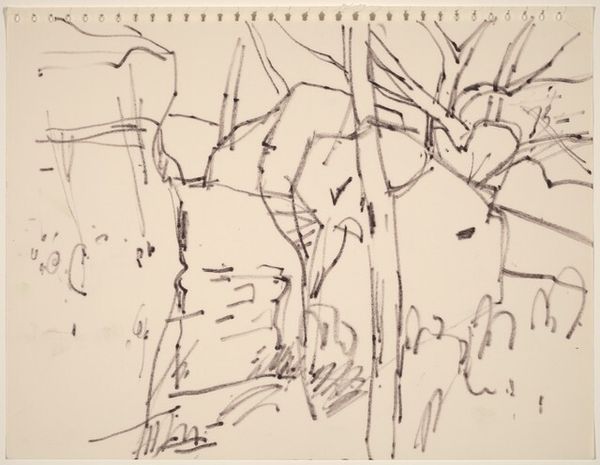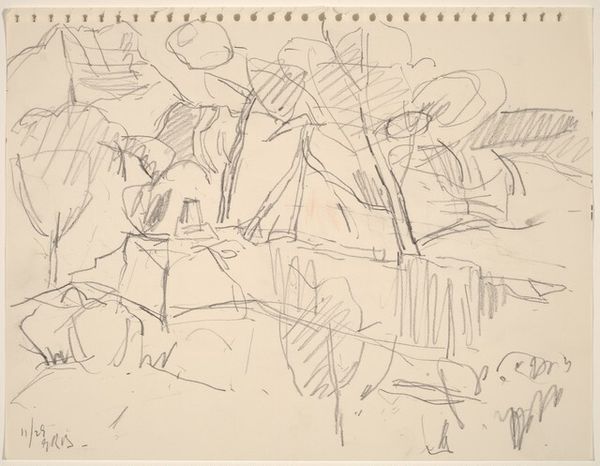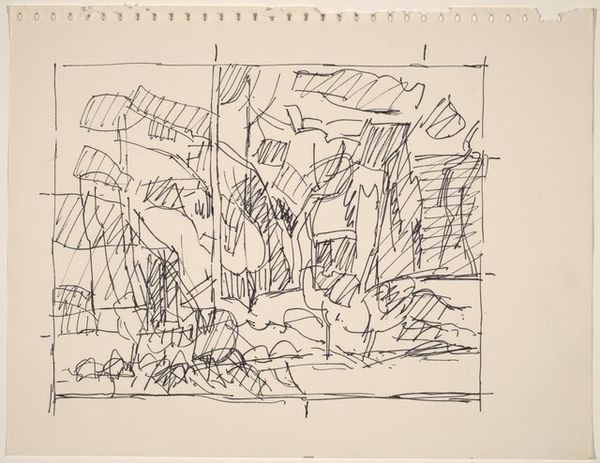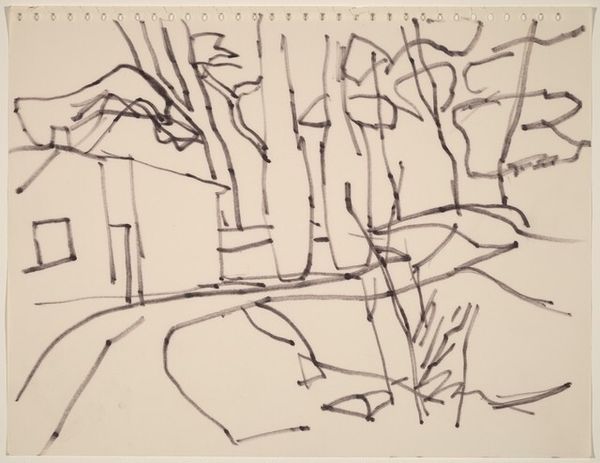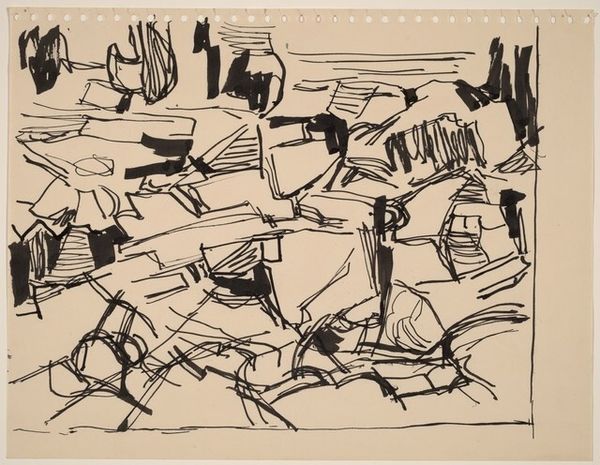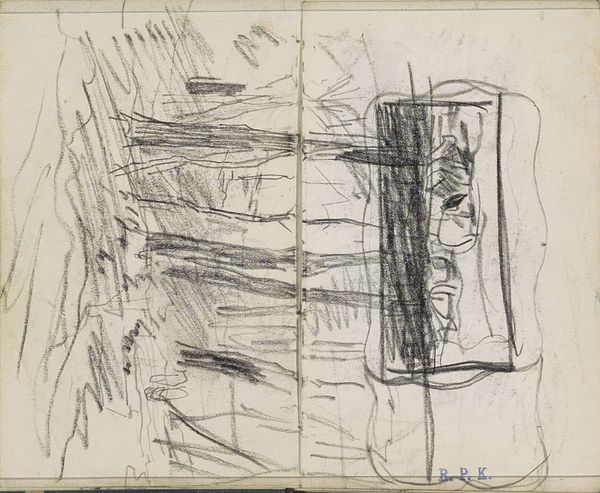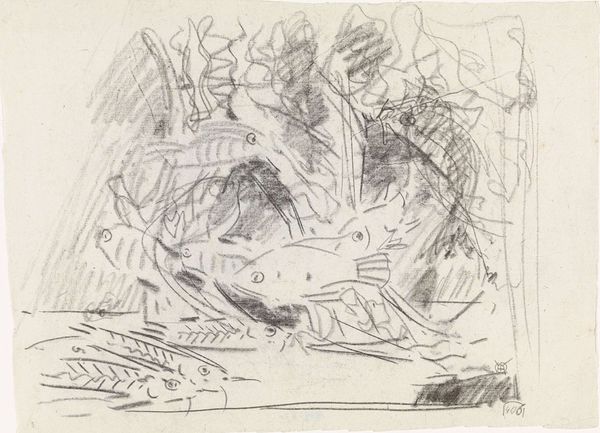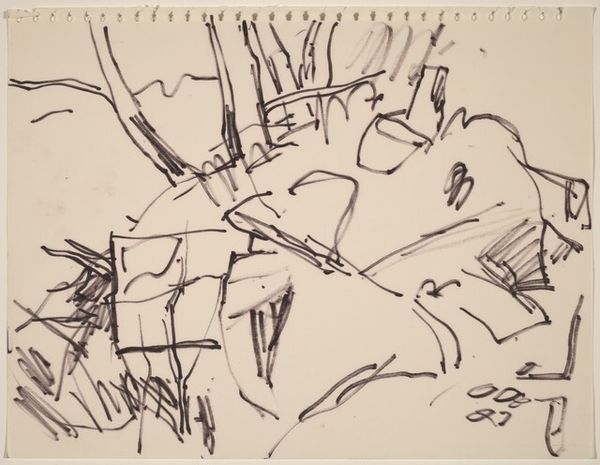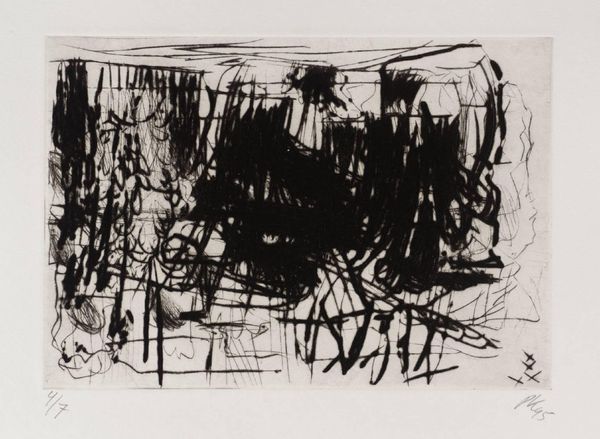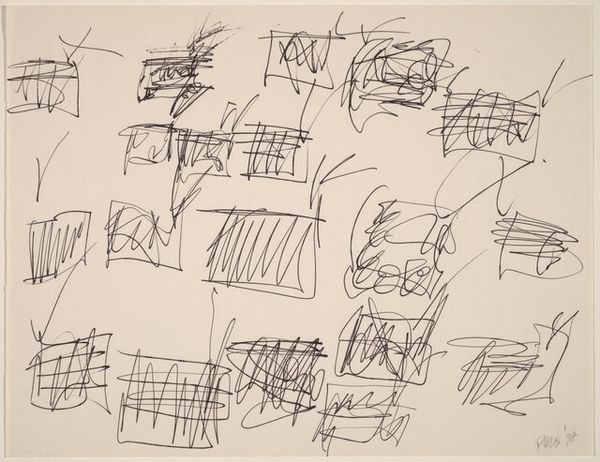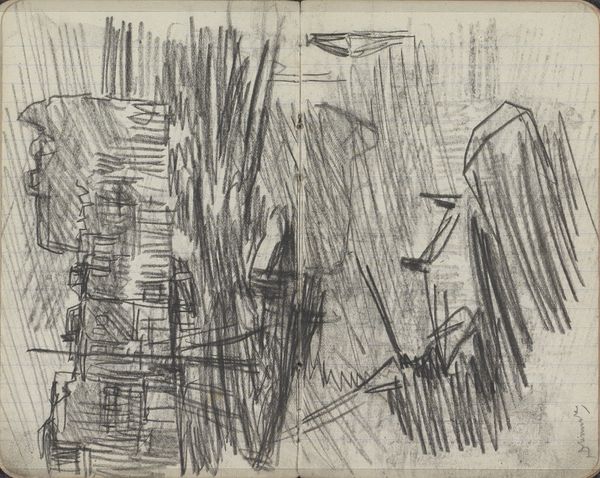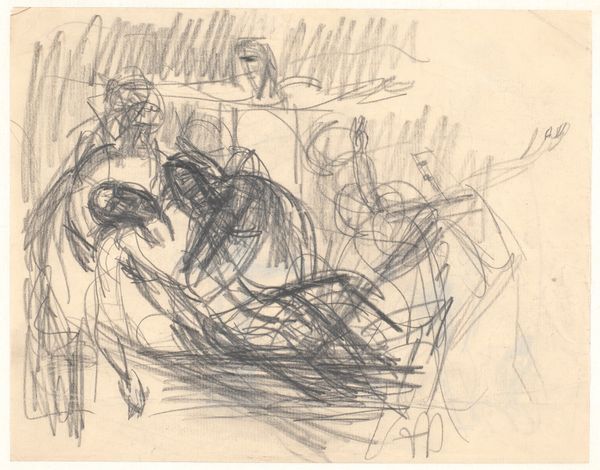
drawing, ink
#
abstract-expressionism
#
drawing
#
ink drawing
#
ink
#
abstraction
#
line
#
sketchbook drawing
Dimensions: sheet: 21.4 x 27.8 cm (8 7/16 x 10 15/16 in.)
Copyright: National Gallery of Art: CC0 1.0
Curator: Looking at this intriguing sketch, its nervous energy grabs my attention right away. What is it about those clustered lines that makes it so restless? Editor: I find that reaction quite fitting. This ink drawing by George Bunker, simply titled "Untitled," was created around 1969. Bunker was working within the broad sphere of Abstract Expressionism at this time, a movement loaded with post-war anxieties and seeking new ways to articulate subjective experience. Curator: I see. I can feel the weight of that artistic movement and time period. It is almost claustrophobic; the lines jostle for space within the frame. They build up these frantic blocky masses that contrast with softer looping marks that suggest…figures, perhaps? Are those figures important symbolically in Bunker’s wider work? Editor: Well, it is worth noting the cultural backdrop against which Bunker developed his art: an ascendant civil rights movement, anti-war protests, and shifting gender roles were shaking up established social norms. This atmosphere permeates Bunker’s oeuvre, leading him to use symbols and fragmented bodies to express social fracture and personal trauma. Here, it almost looks as though the artist is depicting conflict itself as jumbled abstract forms rather than identifiable protagonists. Curator: Do you think Bunker purposefully echoed or responded to earlier Cubist works in his renderings of fractured perspective? I see something almost Picassoid in the breaking up of forms. Editor: No doubt that is a factor! But instead of intellectual rigor, it feels rawer and more immediate. As a sketchbook drawing, the ink carries emotional vulnerability. These kinds of lines, chaotic and overlapping, became, in the hands of the Abstract Expressionists, visual equivalents for interior states. Curator: It does indeed seem quite private and visceral. This artwork allows us to observe him working through and responding to his era with a powerful sincerity. Editor: Yes, seeing these images through Bunker's eyes deepens my appreciation of this critical era, even in this small work on paper.
Comments
No comments
Be the first to comment and join the conversation on the ultimate creative platform.

